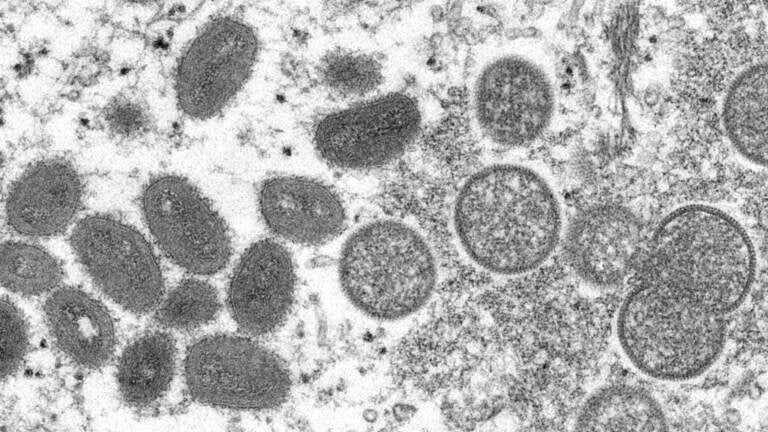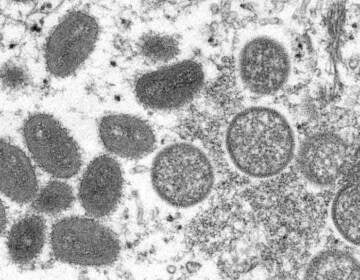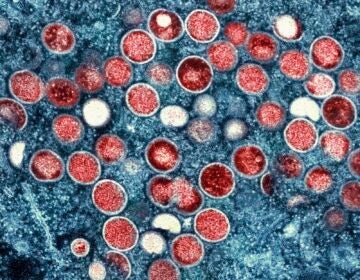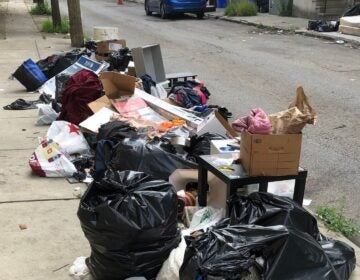Philadelphia resident identified as first probable monkeypox case in Pa.
Pennsylvania’s first case of the monkeypox virus has been reported in Philadelphia based on preliminary testing.

File photo: This 2003 electron microscope image made available by the CDC shows mature, oval-shaped monkeypox virus particles, left, and spherical immature particles, right. (Cynthia S. Goldsmith, Russell Regner/CDC via AP)
Pennsylvania’s first probable case of monkeypox has been reported in Philadelphia, city health officials said Thursday afternoon. Further testing by the U.S. Centers for Disease Control and Prevention to confirm the case is pending.
As of Thursday, there have been 19 confirmed cases of monkeypox in the U.S. Worldwide, there are more than 500 cases, and there has been one death associated with this outbreak.
“The threat to Philadelphians from monkeypox is extremely low,” said Health Department Acute Communicable Disease Program Manager Dana Perella in a statement. “Monkeypox is much less contagious than COVID-19 and is containable particularly when prompt care is sought for symptoms.”
The virus that causes the disease — which is related to smallpox — is transmitted through close contact with broken skin, or through the eyes, nose, and mouth. Monkeypox is not a sexually transmitted disease, but it can spread through intimate contact.
Local infectious disease experts say the new outbreak is noteworthy because of the number of cases across multiple continents at once over a relatively short time period, however, the disease is less contagious than COVID-19, since it does not spread through the air, and vaccines and therapeutics are available to treat the disease after exposure.
The outbreak is unlikely to become widespread, said epidemiologist Michael LeVasseur of Drexel University.
“It has kind of a long latent period. So it’s not surprising that we’re still finding cases,” he said. “I think that there’s still plenty of time for it to be contained, especially with contact tracing and making sure that any close contacts that they’ve had are alerted and are put on watch.”
Symptoms typically arise about 12 days after exposure, but can present any time between four and 21 days. The virus can cause fever, headache, muscle aches, back pain, and swollen lymph nodes. The most distinguishable symptom is a blistering rash.
To protect the resident’s privacy, the Philadelphia health department won’t confirm any information about them. The infected resident is currently working with the health department to identify any contacts that may have been exposed, who will be contacted directly.
Philadelphia’s health department “strongly recommends that anyone who is experiencing symptoms of an unexplained rash on their face, palms, arms, legs, genitals, or perianal region that may be accompanied by flu-like illness should contact their regular healthcare provider as soon as possible.”
LeVasseur said doing so will make a difference in stopping the spread.
“If you have sores, go to the doctor and make sure that you keep in mind any intimate partners that you may have over the course of the next couple of weeks in the event that we have to do contact tracing to prevent further spread,” he said. “This isn’t about stigmatizing anyone. This is about making sure that everyone is taken care of and can be watched to make sure that they don’t have substantial disease and to prevent further transmission.”
WHYY is your source for fact-based, in-depth journalism and information. As a nonprofit organization, we rely on financial support from readers like you. Please give today.







